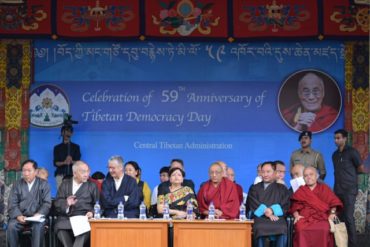Kolkata : Tall and slim, the AK-47 assault rifle wielding Mallojula Koteshwar Rao alias Kishanji was the field general and media savvy leader of the banned Maoists. He invoked fear as well as curiosity through his television interviews with his face covered with a cloth and his audio taped messages.
A senior member of the politburo or top policy making body of the banned Communist Party of India-Maoist that is engaged in a guerrilla warfare to capture power in India, the 1956 born Kishanji has been the in-charge of the outfit’s military operation since its foundation in 2004 – through merger of the People’s War Group and the Maoist Communist Centre.
A close aide of elusive Maoist chief Muppalla Lakshmana Rao alias Ganapathy, Kishanji was adept in use of firearms and known for his fast movements and sharp intelligence that helped him escape the dragnet of security forces on several occasions over the past three years.
Kishanji, was killed Thursday by security forces in West Bengal, officials said.
Born in Nachpalli village of Andhra Pradesh’s Karimnagar district, Kishanji’s father was a leader of the Congress Socialist Party.
He had a normal childhood and studied in a government college, but came close to Naxalite (Maoist) leader Kondapalli Seetharamaiah. Koteshwar Rao was christened Kishanji, and soon became one of the two trusted lieutenants of Seetaramaiah. Ganapathy was the other.
He played a leading role in forming the People’s War Group, in 1980, and in 1994 was given charge of military operations in West Bengal.
Kishanji settled alongside a couple of close associates in the industrial town of Naihati close to the metropolis and began organising and indoctrinating the workers besides trying to rope in youths from the backward Purulia and Bankura districts.
After the PW merged with the MCC in 2004 to form the CPI-Maoist, Kishanji became a founding member of the party’s politburo, and was given the responsibility of the eastern command. He was in charge of a slew of eastern states including West Bengal, Assam, Orissa and Jharkhand.
Known for his shrewdness, and firm commitment to the rebel’s violent cause, Kishanji has been described by security agencies as cruel who did not bat an eyelid in killing those whom he called “class enemies” or “enemies of the revolution”. At the same time, a number of PW and CPI-Maoist leaders had to go into obscurity after they fell out with Kishanji.
After the Maoist presence in Lalgarh under Binpur-1 block of West Midnapore district came into the open months after the landmine blast on West Bengal’s then chief minister Buddhadeb Bhattacharjee’s convoy in November 2008, Kishanji became its chief spokesman. He struck a good rapport with the Bengal media, and called up journalists of various outlets whenever he wanted to present the Maoists’ views on any issue. He also took calls often, and claimed responsibility for the various killings and ambushes indulged in by the ultras including the attack on the Silda Eastern Frontier Rifles camp and the abduction of a police officer.
But the media interactions reduced after he was seriously injured during a shootout with the security forces in Lakshamanpur in West Midnapore district in March, 2009.
It was initially rumoured that Kishanji had died, but he emerged after months with a media interview.
Kishanji also liaisoned with ultra outfits like United Liberation Front of Assam, and those in other north eastern states as also in Myanmar.
IANS



